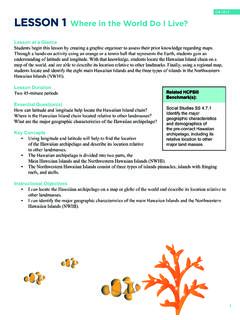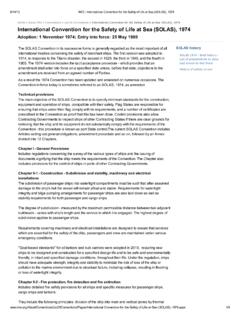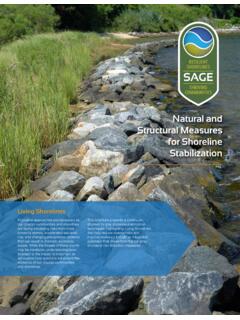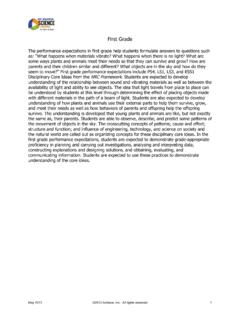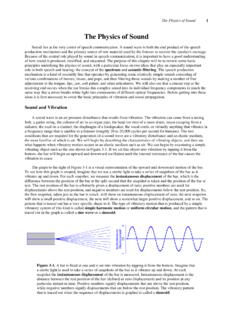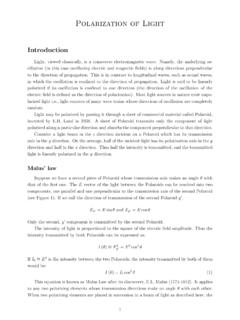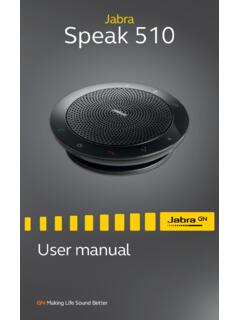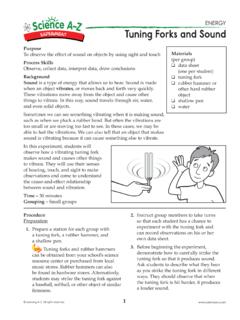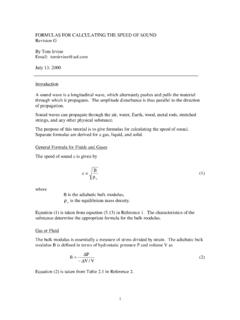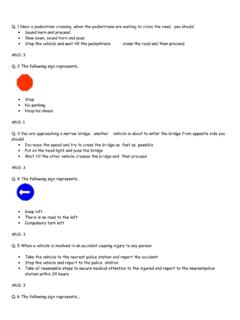Transcription of Lidar 101: An Introduction to Lidar Technology, Data, and …
1 Lidar 101: An Introduction to Lidar Technology, Data, and Applications National Oceanic and Atmospheric Administration (NOAA) Coastal Services Center Coastal Geospatial Services Division Coastal Remote Sensing Program November 2012 For More Information: Keil Schmid, NOAA Coastal Services Center (843) 202-2620 Authors and Contributors: Jamie Carter, Keil Schmid, Kirk Waters, Lindy Betzhold, Brian Hadley, Rebecca Mataosky, and Jennifer Halleran, NOAA Coastal Services Center Suggested Citation: National Oceanic and Atmospheric Administration (NOAA) Coastal Services Center. 2012. Lidar 101: An Introduction to Lidar Technology, Data, and Applications. Revised. Charleston, SC: NOAA Coastal Services Center.
2 NOAA Coastal Services Center 2234 S. Hobson Ave. Charleston, SC 29405 (843) 740-1200 Regional Offices: NOAA Pacific Services Center, NOAA Gulf Coast Services Center, and Offices in the Great Lakes, Mid-Atlantic, Northeast, and West Coast Table of Contents 1. 2. What Is Lidar ? .. 2 Overview .. 2 What Is Lidar ? .. 3 Lidar 4 Basic 5 Basic Principles and Techniques .. 7 Applications A Quick 9 11 Summary .. 11 3. Data Produced by Lidar 13 Overview .. 13 Improvements over Previous Data .. 13 Vertical 13 Horizontal Resolution .. 14 Temporal 16 16 Accuracy Assessment Techniques.
3 17 Descriptive Terms .. 17 Data 18 Points .. 18 Digital Elevation Models (DEMs) .. 20 23 Summary .. 24 4. Use of Lidar 25 Overview .. 25 Obtaining 25 Interagency Elevation Inventory .. 26 Digital Coast (NOAA Coastal Services Center) .. 27 Loading Data into a 27 Lidar Data and ArcGIS .. 28 39 Summary .. 39 5. Data Customization and 41 Overview .. 41 Data 41 Return 43 Classification .. 45 47 Accuracy Specification and 48 Qualitative Review of Lidar Data .. 50 Data Attribute Specification in Digital Coast .. 53 Summary .. 55 6. Examples of Coastal Lidar Applications .. 56 Overview .. 56 Shoreline 56 Inundation Mapping.
4 61 Wetland Habitat 64 Summary .. 69 Table of 70 Works 71 1. Introduction light detection and ranging ( Lidar ) mapping is an accepted method of generating precise and directly georeferenced spatial information about the shape and surface characteristics of the Earth. Recent advancements in Lidar mapping systems and their enabling technologies allow scientists and mapping professionals to examine natural and built environments across a wide range of scales with greater accuracy, precision, and flexibility than ever before. Several national reports issued over the past five years highlight the value and critical need of Lidar data.
5 The National Enhanced Elevation Assessment (NEEA) surveyed over 200 federal, state, local, tribal, and nongovernmental organizations to better understand how they use enhanced elevation data, such as Lidar data. The over 400 resulting functional activities were grouped into 27 predefined business uses for summary and benefit-cost analysis (NDEP, 2012). Several of these activities will be described in more detail in the applications section of this document. There are many considerations and trade-offs that must be understood in order to make sound decisions about the procurement, processing, and application of Lidar data. This document provides introductory and overview information, as well as in-depth technical information, to support decision-making in all phases of Lidar projects.
6 While the information presented here is not comprehensive, it covers aspects of the technology that are the most common subjects of discussion within the coastal management community. 1 2. What Is Lidar ? Overview Lidar has become an established method for collecting very dense and accurate elevation data across landscapes, shallow-water areas, and project sites. This active remote sensing technique is similar to radar but uses laser light pulses instead of radio waves. Lidar is typically flown or collected from planes where it can rapidly collect points over large areas (Figure 2- 1). Lidar is also collected from ground-based stationary and mobile platforms.
7 These collection techniques are popular within the surveying and engineering communities because they are capable of producing extremely high accuracies and point densities, thus permitting the development of precise, realistic, three-dimensional representations of railroads, roadways, bridges, buildings, breakwaters, and other shoreline structures. Collection of elevation data using Lidar has several advantages over most other techniques. Chief among them are higher resolutions, centimeter accuracies, and ground detection in forested terrain. This section will address 1) the basics of Lidar , 2) the terminology, and 3) some examples of how the data are routinely used. Figure 2-1. Schematic diagram of airborne Lidar performing line scanning resulting in parallel lines of measured points (other scan patterns exist, but this one is fairly common) 2 What Is Lidar ?
8 Lidar , which is commonly spelled Lidar and also known as LADAR or laser altimetry, is an acronym for light detection and ranging. It refers to a remote sensing technology that emits intense, focused beams of light and measures the time it takes for the reflections to be detected by the sensor. This information is used to compute ranges, or distances, to objects. In this manner, Lidar is analogous to radar (radio detecting and ranging), except that it is based on discrete pulses of laser light . The three-dimensional coordinates ( , x,y,z or latitude, longitude, and elevation) of the target objects are computed from 1) the time difference between the laser pulse being emitted and returned, 2) the angle at which the pulse was fired, and 3) the absolute location of the sensor on or above the surface of the Earth.
9 There are two classes of remote sensing technologies that are differentiated by the source of energy used to detect a target: passive systems and active systems. Passive systems detect radiation that is generated by an external source of energy, such as the sun, while active systems generate and direct energy toward a target and subsequently detect the radiation. Lidar systems are active systems because they emit pulses of light ( the laser beams) and detect the reflected light . This characteristic allows Lidar data to be collected at night when the air is usually clearer and the sky contains less air traffic than in the daytime. In fact, most Lidar data are collected at night. Unlike radar, Lidar cannot penetrate clouds, rain, or dense haze and must be flown during fair weather.
10 Lidar instruments can rapidly measure the Earth s surface, at sampling rates greater than 150 kilohertz ( , 150,000 pulses per second). The resulting product is a densely spaced network of highly accurate georeferenced elevation points (Figure 2-2) often called a point cloud that can be used to generate three-dimensional representations of the Earth s surface and its features. Many Lidar systems operate in the near-infrared region of the electromagnetic spectrum, although some sensors also operate in the green band to penetrate water and detect bottom features. These bathymetric Lidar systems can be used in areas with relatively clear water to measure seafloor elevations. Typically, Lidar -derived elevations have absolute accuracies of about 6 to 12 inches (15 to 30 centimeters) for older data and 4 to 8 inches (10 to 20 centimeters) for more recent data; relative accuracies ( , heights of roofs, hills, banks, and dunes) are even better.
